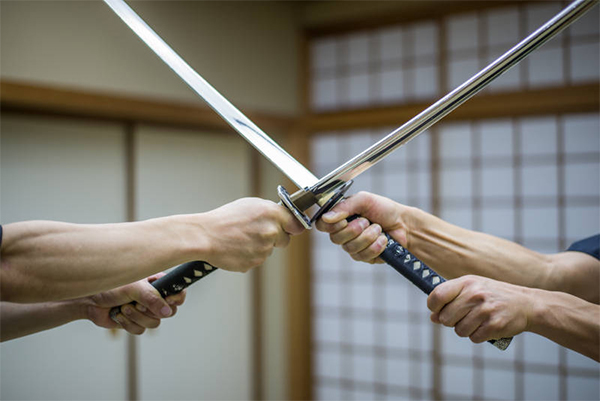How to evaluate the quality of a sword?

For a good sword, the relationship between hardness, toughness, and sharpness should be a balanced value, which means that a sword must have hardness, sharpness, and toughness.
So, many sword lovers will encounter a problem when choosing a sword, how to judge the quality of a sword? What factors are related to the quality of swords?

1) Hardness
Hardness refers to the ability of a blade to maintain its shape under resistance. A sword made with a hard blade will not bend or deform when hitting the target. On the contrary, the blade maintains its original shape, indicating high hardness. Hardness is important because it determines whether the blade can maintain the edge. A sword with a soft blade will shatter upon impact and withstand other structural blade damage, forcing the owner to sharpen it again.
In fact, due to the limitations of the material itself, steel, there is no such thing as a "cutting iron like mud" sword in real life. The hardness of commonly used swords is between HRC 50-60 (HRC is a unit for measuring the hardness of materials). Although the cutters exceeding HRC60 are hard, they are too brittle and easily break when cutting hard objects. Therefore, whether it is a Chinese sword, a japanese sword, or a Swiss saber, their hardness generally does not exceed HRC60.
2) Strength
Some people think that hardness and strength refer to the same property, but this is not necessarily true. Strength refers to the ability of a sword to maintain its structural integrity under stress and strain, while hardness refers to the ability of a sword to maintain its shape under resistance. The two terms have similar characteristics, but strength is particularly concerned with resistance to stress and strain.

3) Flexibility
There is also flexibility, which refers to the ability of the sword to bend and bend under resistance. Swords can have hard or flexible blades. If the blade is flexible, it will bend under resistance, such as hitting a target or object. If it is hard, it will not bend. However, even if the sword has a flexible blade, the blade will return to its original shape. This is the fundamental difference between flexibility and hardness. Swords with soft (low-hardness) blades deform permanently under resistance, while shape deformations with flexible blades are only temporary.
4) Balance
Finally, balance is a key indicator used to evaluate sword quality. Balance refers to the position of the balance point of the sword. Ideally, it should provide an even weight distribution, with the balance point located only a few inches from the tsuba (hand guard). If the balance point of the sword is too high or too low, it will be difficult to draw and use, especially in real-world combat scenarios, such as those often experienced by samurai in the feudal era of Japan.
Of course, traditional Japanese swords like katana do well in these four attributes. They are strong, but still flexible, with the right balance. Even today, swordsmiths from all over the world use these same techniques to make high-quality swords.
Discover the many attractive options available for Katana swords and custom swords.
Want a unique sword? Feel free to contact us:
Phone: 086 13739276006
Email: [email protected]
Website: www.hanbonforge.com
Custom Sword Page: www.hanbonforge.com/CUSTOM-SWORDS/Custom-Your-Own-Swords

2 Comment(s)
Hello, i have a 1988 Calgary Winter Games Olympic presentation sword. Could you give me any idea as to its value?
Thanks
I am looking to buy a Katana Samarai Sword, Do you have any suggestions for a manufacturer of Samarai Swords that you would recommend. I presently have a set of
swords that are replicas but want a more traditional Sword.
Leave a Comment